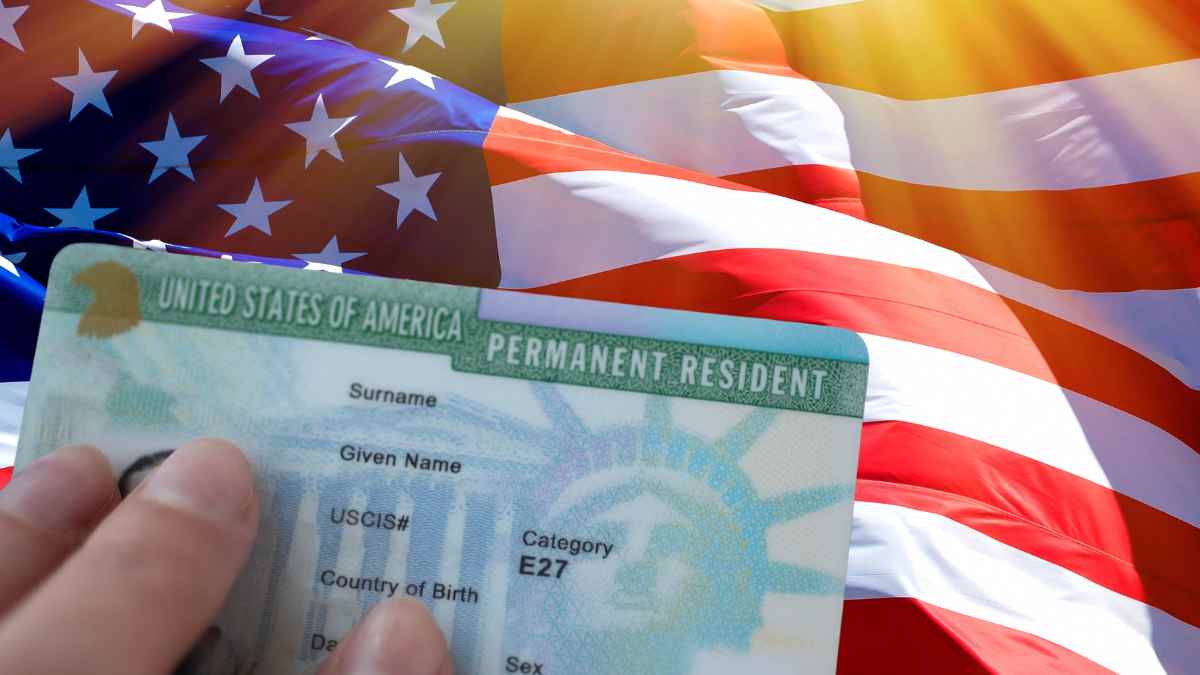The assumption of the new administration of Donald Trump has brought unprecedented changes for those who dream of obtaining the Green Card. As of February 10, the eligibility criteria for permanent residence, also known as the Green Card, will be redefined, and many will be affected by the adjustments that the US Government has decided to implement. These changes, announced through the US Citizenship and Immigration Service (USCIS), promise to mark a before and after in the country’s immigration policy and could mean the end of the longed-for “American dream” for more than one.
Permanent residence in serious trouble: a U-turn
According to the new guidelines confirmed by the USCIS, the Green Card will be subject to modifications focused on increasing control over applicants and their capacity for integration and self-sufficiency in the United States. In addition to the requirement for medical examinations — endorsed by Form I-693 — the review of health documentation will be reinforced, but with an important change from January 22, 2025. From that date, the USCIS will exempt adjustment of status applicants from presenting evidence of having received the COVID-19 vaccine, thus eliminating a requirement that had generated some controversy during the pandemic.
This announcement represents a relaxation of one of the most controversial sections of the medical requirements. However, it is still mandatory to present the other vaccinations and health tests that are usually required to complete the immigration medical examination. It should be remembered that, although this provision came into effect on January 22, all other medical requirements will remain substantially unchanged until further notice.
Form I-485 and integration of the Affidavit of Support
Another of the most relevant adjustments is the integration of Form I-864W into I-485, that is to say, the information on the Affidavit of Support will be compacted in the same application for adjustment of status. This measure, which will come into force on February 10, promises to speed up the process, reduce bureaucracy and, at the same time, maintain rigorous control over the financial situation of those who aspire to stay in the United States in the long term.
According to the USCIS, the main objective is to ensure that the applicant does not become a “public charge” and that he or she has stable financial support. In other words, the sponsor or petitioner must demonstrate their ability to support the applicant so that the latter does not resort to government aid on a long-term basis. This reinforces the self-sufficiency policy, one of the pillars of the Trump administration for 2025.
Who can apply for a Green Card and how to apply
The eligibility categories for the Green Card remain the same: the most common include family, employment, refugee or asylum status, victims of human trafficking or crime, and certain special situations such as widowhood or “special immigrant” status. The USCIS reminds us that, in most cases, the applicant requires another person to file a petition on their behalf (for example, a Form I-130 for relatives or a Form I-140 for foreign workers). Once that petition has been approved and the visa is available, the final application for the Green Card is made, either by adjustment of status (within the United States) or through consular processing (outside the country).
For those who reside in the US with a non-immigrant visa, a key step is to file Form I-485 (Application to Register Permanent Residence or Adjust Status) following the updated instructions. As of February 10, much of the process will be done in a unified manner with the Affidavit of Support, which promises to speed up response times.
Changes in the interview and in the fees
The USCIS has also simplified the public questions asked during the interview process, eliminating those considered repetitive or of less relevance. However, it warns that the rigorous review of documentation and background will remain firm, especially with regard to the health and socioeconomic evaluation of applicants.
As for fees, it is worth remembering that the US government charges additional fees for most immigration procedures. The USCIS recommends checking its fee calculator on its official website to find out the exact costs associated with Form I-485 and other necessary documents.
Don’t forget, at the end of this article, the option to keep informed of the latest news by consulting the current news, which are made daily on this website of digital information.






